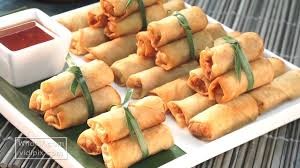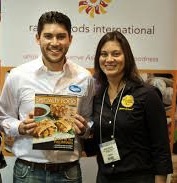Ramar Foods and Fil-Am history: Over 1 billion lumpia served
SAN FRANCISCO — Adversity can inspire new solutions. That was the case for many Filipinos who left their homeland during the political challenges that led to the declaration of martial law in the Philippines in 1972, and the installation of a fascist dictatorship that hastened immigration to the U.S., primarily to California and Hawaii.
Such was the case for Maria and Ramon Quesada, who left the Philippines and in 1969, began selling Filipino handicrafts at the San Jose flea market. In 1972, Ramon and Maria opened their first store, named (www.RamarFoods.com), in Mountain View, California, selling imported packaged foods to other recent arrivals. At the time, they didn’t know that 46-years later, they would become one of the leading producers of premium Philippine foods, especially lumpia, in the world.
Like most ethnic foods in the United States, Philippine cuisine was introduced during the mass immigration period. Filipino immigration to the U.S. increased dramatically after the passing of the Immigration Act of 1965. During the 1970s, many immigrant families opened “mom-and-pop” grocery stores, bakeries and take-out eateries to serve their new community, offering a taste of home in the casual dining format common in the Philippines.
Orientex sets the industry standard for prepared lumpia. No other company compares for ingredient quality, flavor and consistently perfect products. Perfectly crispy wrappers hold premium meats and freshly chopped vegetables to make Orientex Lumpia the best product around. Made in Northern California, the lumpia preparation uses the same homemade ingredients moms used to make for family parties.
Today, Ramar Foods is the leading producer of Filipino foods in the U.S., and now distributes eight Asian food brands and over 100 products across North America. Their son, Primo Quesada Sr. was responsible for incorporating the family business and named it “Ra-Mar” for his parents Ramon and Maria respectively.
The company now focuses on manufacturing rather than importing and uses time-tested family recipes for its products, which are made in Northern California.
Like us on Facebook

